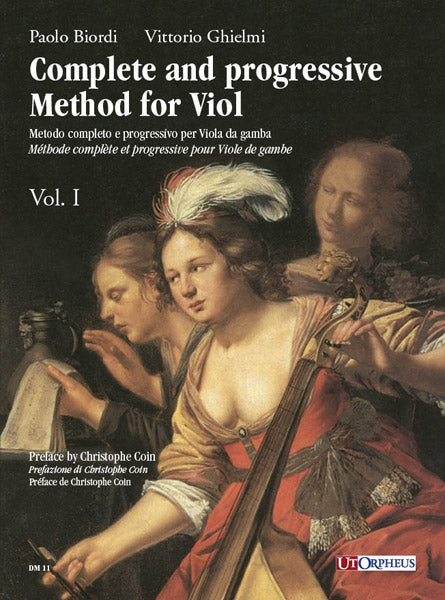
Biordi and Ghielm: Complete and progressive Method for Viol - Volume 1
Festive Returns Period
For orders received in December 2025, we are offering an extended returns period until Monday 12th January.
Worldwide Shipping in Time for Christmas
We ship our entire catalogue all over the world, fully tracked and insured.
UOEDM11
During its climax, the viol had a reputation for being able to imitate the finest nuances of the human voice and express the deepest feeling of the soul. At the end of the XVIII century, as it was considered too difficult and aristocratic, it became obsolete with respect to the new standards prevailing during that pre-revolutionary period, and it was rapidly deposed by the cello. This last was promoted throughout the whole of Europe by some virtuosi, mostly Italian. And so also Wilhelm Friedrich II, king of Prussia, at first pupil (by correspondence) of Forqueray the son, passed later on to the cello, under the guidance of Duport.
In these last years the viol has found its splendour again, and its beautiful repertory, supported by some excellent musicians in concerts, recordings — even at the cinema — has obtained the recognition of the wide public and of certain institutions, which have included it in their teaching courses.
The teaching of the Ancients, mostly based on direct transmittion and on the imitation of the teacher, has left us only few treatises, often lapidary and adaptable with difficulty to our current didactic methods. Thus, the apprentices of viol, having to face up to the venture of referring to a tradition which was interrupted for two centuries, will certainly welcome this new method with satisfaction.
Intentionally devoid of photos and commentaries, this method does not intend to replace the living example of the teacher, but provides, in the form of progressive exercises, an essential help to the development of a synthetic and personal technique on the instrument.
Many countries have recognized since long time the advantages offered by the viol in approaching the pleasures of music at different levels:
– the different sizes making up the viol family allows the child to grow up having the experience of a superb ensemble repertory;
– its humble but essential support role in the basso continuo aids the understanding of the musical structure;
– its solo repertory, covering a wide range of styles, contains pieces by composers of great genius.

